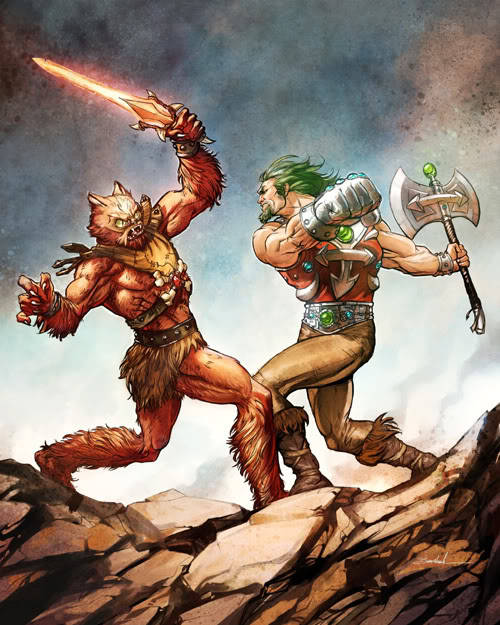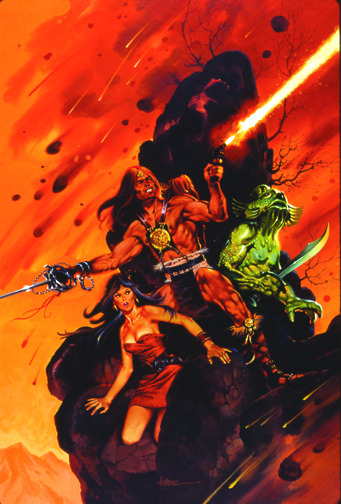We continue our examination of Jim Starlin's Dreadstar Saga with The Price. The earlier posts in the series can be found here.
Eclipse Graphic Album Series #5 (October 1981) Story & Art by Jim Starlin
Synopsis: In his sanctum, Taurus Killgaren is well aware that Darklock comes to kill him him. His demon familiar asks what will happen. Killgaren replies: "Most likely, I will die," but he adds that at last Syzygy Darklock will see the truth.
Darklock arrives sooner than expect and demands to know what truth, though he blasts off Killgaren's legs and disintegrates the sorcerer's familiar before getting the answer. 'Why?" he demands.
Killgaren tells him. The dread veil sorcerers are actually cosmic scholars, studying the dark sciences for the betterment of mankind. In his studies, Killgaren saw signs of a stellar event that would have a positive effect on humanity. This future was tenuous, though, so he set out to find a way to unsure it came to pass. it turns out either Syzygy or his brother was fated to play a part in this future, yet it wasn't clear which one. Killgaren chose Szygy and used his powers to influence him into the priesthood. One problem remained; despite a "certain immorality" on Darklock's part he was loyal in friendship...
To gain the power from the demon, Darklock must sacrifice the soul of the mortal he most loves in the universe: Sister Marian.
Darklock can't imagine what the sorcerer thinks would move him to such a deed. Killgaren shows him a vision of the future in his mystic orb:
Darklock doesn't want to accept it. He wonders why Killgaren did this? Was it to steal Darklock's place in the cosmic drama?
Killgaren laughs, then gives his reason:
Darklock responds:
Darklock arrives sooner than expect and demands to know what truth, though he blasts off Killgaren's legs and disintegrates the sorcerer's familiar before getting the answer. 'Why?" he demands.
Killgaren tells him. The dread veil sorcerers are actually cosmic scholars, studying the dark sciences for the betterment of mankind. In his studies, Killgaren saw signs of a stellar event that would have a positive effect on humanity. This future was tenuous, though, so he set out to find a way to unsure it came to pass. it turns out either Syzygy or his brother was fated to play a part in this future, yet it wasn't clear which one. Killgaren chose Szygy and used his powers to influence him into the priesthood. One problem remained; despite a "certain immorality" on Darklock's part he was loyal in friendship...
To gain the power from the demon, Darklock must sacrifice the soul of the mortal he most loves in the universe: Sister Marian.
Darklock can't imagine what the sorcerer thinks would move him to such a deed. Killgaren shows him a vision of the future in his mystic orb:
Darklock doesn't want to accept it. He wonders why Killgaren did this? Was it to steal Darklock's place in the cosmic drama?
Killgaren laughs, then gives his reason:
Darklock responds:
Things to Notice:
Now, "the price" referenced in the title is revealed. The only question is whether Darklock will pay it or not.
Darklock's vision of the future also gives us our first link to Metamorphosis Odyssey since the intro. Vanth Dreadstar's face is among those he sees.
- If the dread veil sorcerers are so benevolent, why are they called "dread?" Or maybe it's just the veil plane that's "dread."
Now, "the price" referenced in the title is revealed. The only question is whether Darklock will pay it or not.
Darklock's vision of the future also gives us our first link to Metamorphosis Odyssey since the intro. Vanth Dreadstar's face is among those he sees.
























































